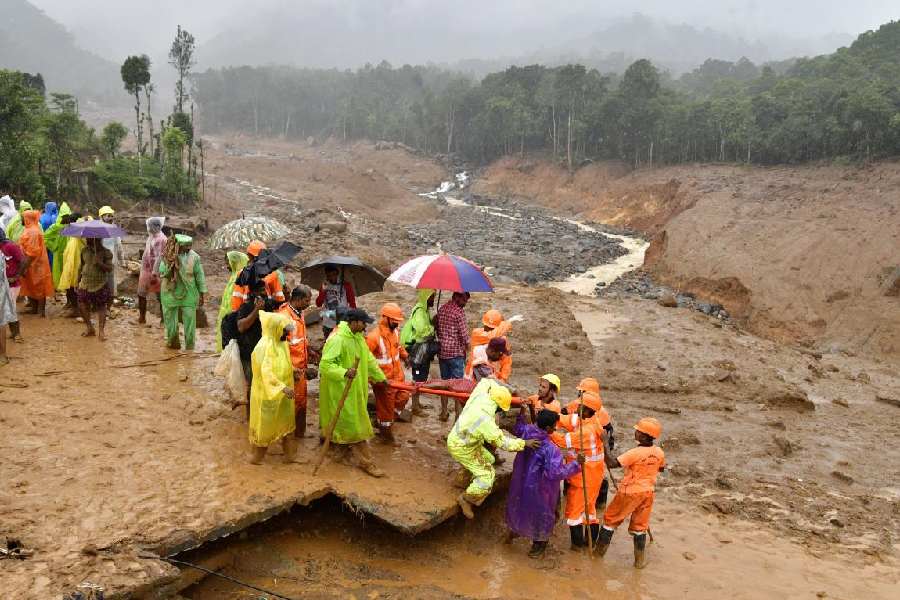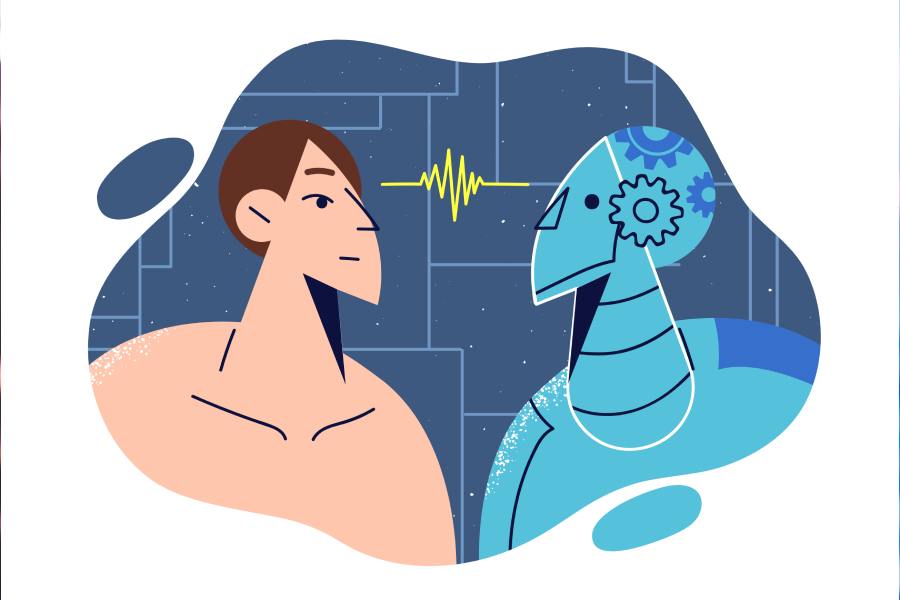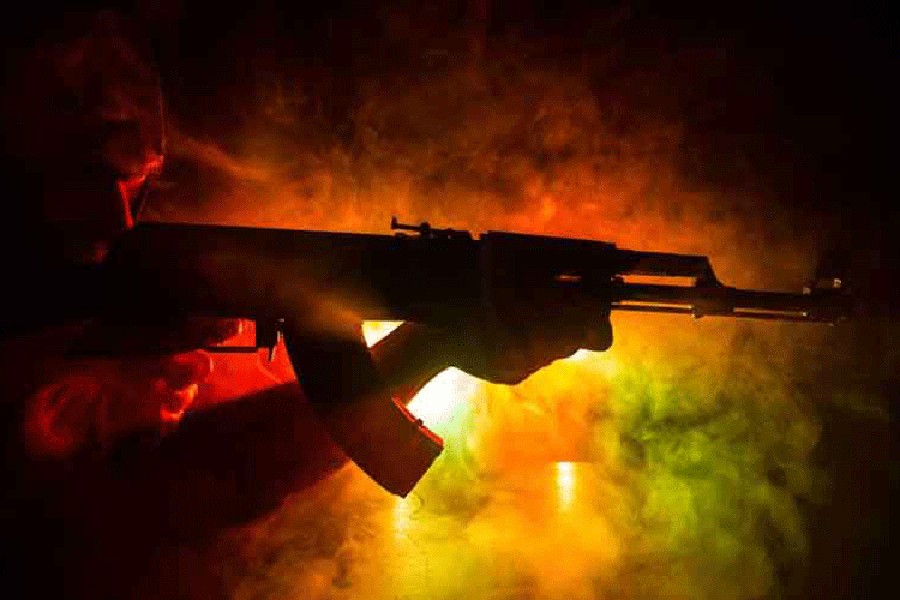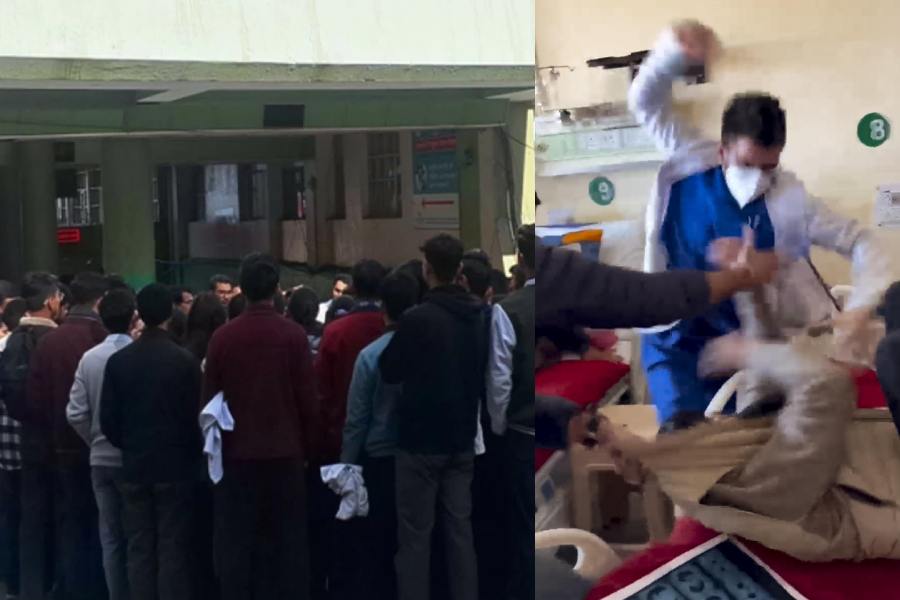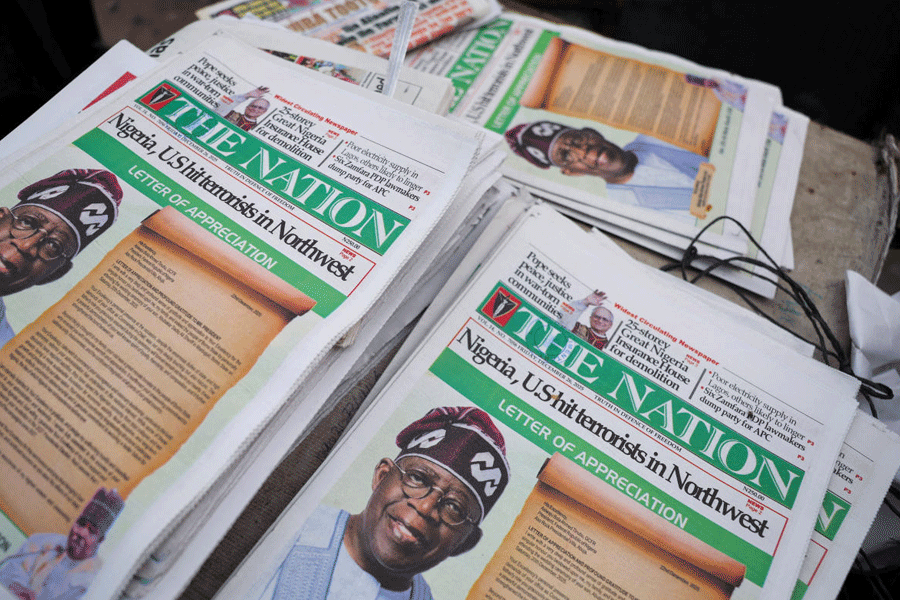Suhara Joseph, 56, was looking for respite from the scorching heat under the shade of a shop in Chooralmala in Wayanad district, blankly looking across the Bailey bridge at the rubble where her house once stood.
She had just returned from the spot from where her home had been swept away by huge boulders on July 30 last year during the worst landslide Kerala has ever witnessed.
She reluctantly returned to the shade as she was alone and afraid of fainting in the scorching sun.
“I am least concerned about the house and the properties we lost, but I can’t get over the fact that the people who were so close to us are all gone,” Suhara said, choking with emotion as tears rolled down her cheeks.
Suhara survived because she was at a hospital for her husband’s treatment. All the neighbours who had visited them at the hospital the previous night died.
Eight months after the disaster, Mundakkai and Chooralmala resemble ghost towns, with an eerie silence surrounding them.
Once a bustling hub of tourist activity, this beautiful valley in Meppadi, Wayanad, is now devoid of residents or tourists.
Even nature itself seems to be standing still, as the mud- and boulder-covered area remains brown, with no new plant life sprouting from the rubble.
When night falls, wild animals take over the region and elephants often wander through the rubble.
“I am just going to see the place where my uncle and aunt lived. We have lost everyone — friends, family. This silence is unbearable,” said Faisal, who often visits the disaster site, still unable to fathom the quietness of the place.
For many like Faisal, who often visit the places where their loved ones once lived, it is a journey to connect with their past, their memories, and often a homage to those who lost their lives in the landslides.
“Many of them still remain buried deep somewhere here. This place is like a tomb to our relatives, and visitors may not respect it,” Faisal said, aware that there would be a barrage of visitors to the site if it were opened for tourism.
The local people had given a memorandum to chief minister Pinarayi Vijayan, requesting him not to open the place for tourists.
In the three wards of the Meppadi panchayat — Punchirimattam, Mundakkai and Chooralmala — there are no residents left. Even the houses that remained intact after narrowly escaping nature’s fury remain closed.
In the partially damaged houses, all that can be found are broken household items, books and other belongings — once woven so closely with the vibrant life that thrived here but now standing as sorrowful reminders of what happened in the early hours of July 30.
The flood marks on these houses remain intact, a stark reminder of how furious nature’s assault was. In most of the remaining areas, only iron bars and pieces of concrete serve as evidence that houses once stood there.
“I have been working on a farm here for over a decade. Every morning, I used to take the road we lost to the landslides. I knew everyone here, and now there is no one. Now, when I ride along the other road to the farm, memories constantly replay in my mind — it is very difficult,” said an estate worker in Mundakkai.
It is this silence that people fear — the rows of houses with no human presence, the whiteness of a place that was once lush green and the huge boulders that razed years of togetherness and survival.
Only one three-member tribal family now remains in Punchirimattam.

